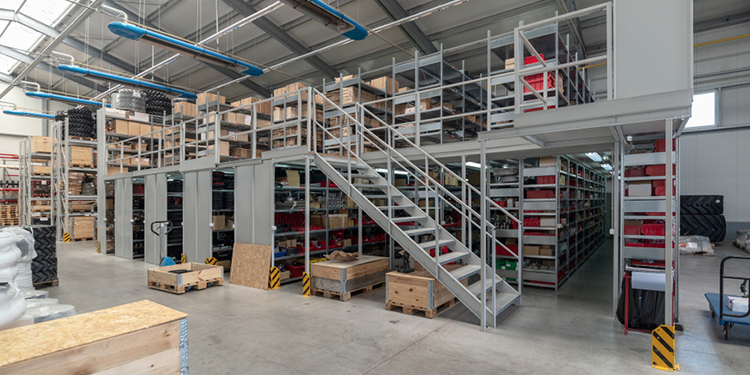How Kickplates On Elevated Work Platforms Contribute To Worker Safety

Among the fall protection measures required for elevated work platforms, pick modules, or rack supported platforms—including guarding, stair handrails, and temporary access devices—kickplates are the one system that doesn’t protect associates working on the platform. Instead, they are often the only line of defense against loose items sliding off the edge and potentially hitting personnel on the level below.
Sometimes referred to as toe guards or toe boards, kickplates are non-perforated vertical plates or barriers installed at the edge of an elevated surface. Guidelines for their installation are offered in two separate ANSI publications: RMI’s ANSI MH16.1-2012: Specification for the Design, Testing and Utilization of Industrial Steel Storage Racks (section 8.4.3.3) and ANSI MH32.1-2018: Stairs, Ladders, and Open-Edge Guards for Use with Material Handling Structures (section 5.3), which was developed by RMI in partnership with the Storage Manufacturers Association (SMA). Additionally, the Occupational Health and Safety Administration (OSHA) 1910.29: Fall Protection Systems and Falling Object Protection-Criteria and Practices, section 1910.29(k) includes specifications for toe boards.
ANSI MH16.1-2012 requires kickplates to extend at least 4 inches above the platform floor. While they are not mandatory at picking locations, they must be present at pallet drop locations. Additionally, if the use of a kickplate would interfere with the path of a conveyor used to discharge trash, they can be omitted from that area. Finally, they do not need to be installed where structural components—such as shelf decking or safety flooring—or rack frame bracing are placed adjacent to the edge of the platform floor.
Looking for additional information about rack supported platform and pick module walkway protection? Download the ANSI MH16.1-2012: Specification for the Design, Testing and Utilization of Industrial Steel Storage Racks.


